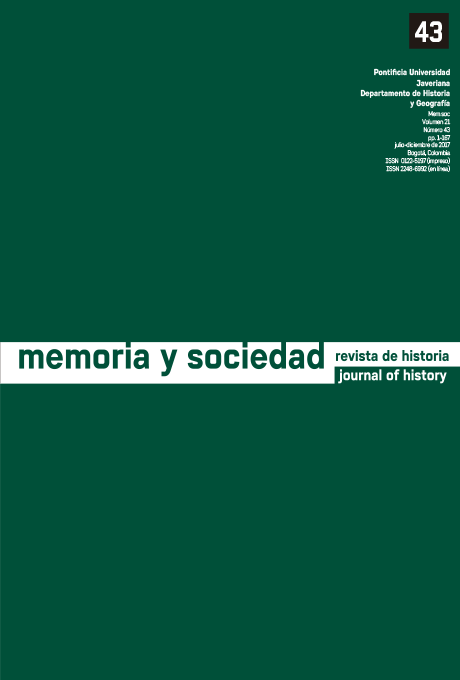Abstract
Desde un análisis historiográfico se examina la representación gráfica de los vicios y las virtudes en la Nueva corónica y buen gobierno de Felipe Guaman Poma de Ayala. A partir de los cánones vigentes en la época, que concebían a la historia como herramienta didáctica indispensable para la educación y moralización de la sociedad y de la influencia que la política tridentina ejerció sobre el autor, se contrastan las representaciones de los vicios y las virtudes, tanto de los indios como de los españoles, a lo largo de la obra. Así mismo, se observa la relación que el autor establece entre la noción de justicia y el temor al castigo; de modo que proponemos distinguir aquella violencia asociada al orden y al buen gobierno incaico de las escenas que denuncian el pecado de la soberbia al retratar los abusos perpetrados por españoles y por algunos indios en la colonia.
The journal Memoria y Sociedad is registered under a Creative Commons Attribution 4.0 International Public License. Thus, this work may be reproduced, distributed, and publicly shared in digital format, as long as the names of the authors and Pontificia Universidad Javeriana are acknowledged. Others are allowed to quote, adapt, transform, auto-archive, republish, and create based on this material, for any purpose (even commercial ones), provided the authorship is duly acknowledged, a link to the original work is provided, and it is specified if changes have been made. Pontificia Universidad Javeriana does not hold the rights of published works and the authors are solely responsible for the contents of their works; they keep the moral, intellectual, privacy, and publicity rights.
Approving the intervention of the work (review, copy-editing, translation, layout) and the following outreach, are granted through an use license and not through an assignment of rights. This means the journal and Pontificia Universidad Javeriana cannot be held responsible for any ethical malpractice by the authors. As a consequence of the protection granted by the use license, the journal is not required to publish recantations or modify information already published, unless the errata stems from the editorial management process. Publishing contents in this journal does not generate royalties for contributors.

